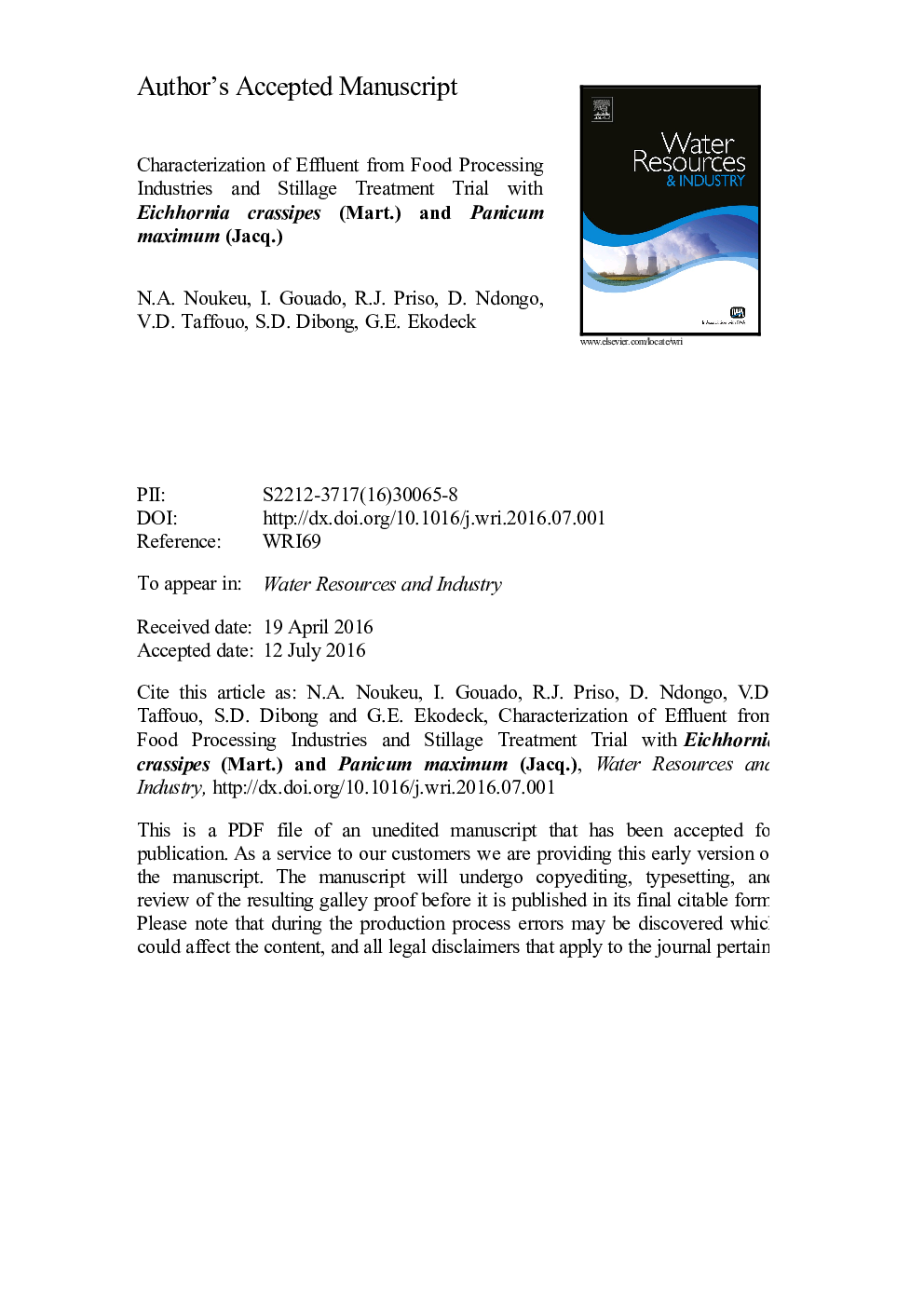| Article ID | Journal | Published Year | Pages | File Type |
|---|---|---|---|---|
| 6334793 | Water Resources and Industry | 2016 | 41 Pages |
Abstract
In this study, effluents from 11 food processing industries from various sectors were characterized through analysis of physical and chemical parameters. In general, effluents pHs are between 4.07 and 7.63. Lead (Pb2+) and cadmium (Cd+) concentrations range from 0.083 to 1.025Â mg/l and 0.052-0.158Â mg/l respectively. The biodegradability of the effluent is very low. The principal component analysis (PCA) grouped industries according to their organic matter levels; thus, stillage, livestock, molasses and sugar refinery effluents show some similarities, as well as confectionery, oil mill, dairy and brewery effluents. Forms of nitrogen measured show low levels of nitrites (NO2â), high levels of nitrates (NO3â), ammonium (NH4+) and Kjeldahl nitrogen (TKN). Among these effluents, a treatment trial with Eichhornia crassipes and Panicum maximum was applied to stillage effluent from Fermencam distillery. The results show that Panicum maximum and Eichhornia crassipes reduce pollutant loads of Fermencam's wastewater.
Related Topics
Life Sciences
Agricultural and Biological Sciences
Aquatic Science
Authors
N.A. Noukeu, I. Gouado, R.J. Priso, D. Ndongo, V.D. Taffouo, S.D. Dibong, G.E. Ekodeck,
